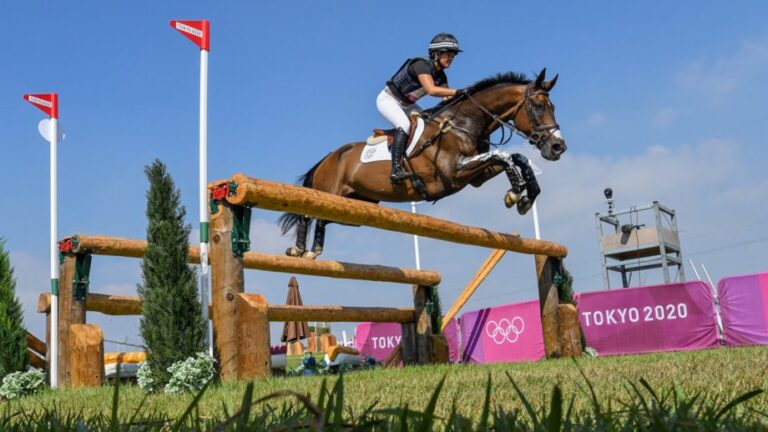Eventing in horse riding is an exhilarating equestrian sport that combines the disciplines of dressage, cross-country jumping, and show jumping. It is often referred to as the “triathlon” of horse riding, testing both the horse and rider’s skill, agility, and endurance across different elements. This multi-phase competition showcases the unique bond between horse and rider as they navigate various obstacles and perform precise movements with grace and precision.
Understanding what eventing entails is crucial for both equestrian enthusiasts and aspiring riders looking to delve into this dynamic sport. Join us as we delve deeper into the thrilling world of eventing and uncover the intricacies that make it a true test of horsemanship and teamwork.
Introduction to Eventing in Horse Riding
Eventing in horse riding, often referred to as the “equestrian triathlon,” is an exhilarating and challenging sport that tests both the horse and rider in various disciplines. It combines the art of dressage, the precision of show jumping, and the endurance of cross-country jumping into one exciting event. Eventing showcases the incredible partnership between horse and rider, requiring finesse, athleticism, and trust.
The Three Phases of Eventing
Eventing consists of three main phases:
- Dressage: This phase emphasizes the horse’s obedience, flexibility, and precision in executing a series of predetermined movements in an arena.
- Cross-Country: Riders navigate a challenging course of natural obstacles, including water jumps, ditches, and logs, testing both speed and endurance.
- Show Jumping: The final phase requires riders to guide their horses over a series of colorful fences without knocking down any rails within a designated time.
Historical Significance
Eventing has a rich history, originally developed as a military test for cavalry horses. Over the years, it has evolved into a popular Olympic sport and a favorite among equestrians worldwide.

History of Eventing
Eventing, also known as horse trials or combined training, is a challenging equestrian sport that tests both the horse and rider in three disciplines: dressage, cross-country, and show jumping. Its origins can be traced back to the military, where cavalry officers would compete in various tests to showcase their horses’ skills and versatility.
Beginnings of Eventing
Eventing as a modern sport began in the early 20th century, evolving from the military training exercises into a formal competition. The sport was first introduced at the 1912 Stockholm Olympics for military officers. It later opened up to civilians, and in 1963, the first Badminton Horse Trials took place, marking a significant milestone in the sport’s history.
Evolution and Expansion
Over the years, eventing has grown in popularity and complexity, with the inclusion of more technical and challenging courses to test the horse and rider’s agility, stamina, and precision. The sport has also become more accessible to a wider range of riders, from amateurs to elite athletes, further contributing to its global appeal.
- 1924: Eventing was first included in the Olympic Games in Paris, France.
- 1998: The sport underwent a format change, introducing the short format or CCI*** (now known as CCI-L).
- 2021: In response to safety concerns, the FEI introduced new rules to improve horse welfare and enhance rider safety.
Key Elements of Eventing
Eventing in horse riding is an exhilarating equestrian sport comprising three primary phases that test both the horse and rider’s skills across various disciplines. Understanding the key elements of eventing is crucial for participants and spectators alike.
The Three Phases
Dressage: This phase focuses on the horse’s obedience, flexibility, and precision of movements in a series of prescribed tests. It showcases the harmony between the rider and horse.
Cross-Country: A thrilling test of endurance, bravery, and agility where horse and rider must navigate a course of solid obstacles within a set time. This phase demonstrates the horse’s athleticism and the rider’s strategy.
Show Jumping: The final phase demands precision and speed as horse and rider tackle a course of colored fences without knocking down any rails. Careful control and accuracy are essential.
Importance of Strategy
Eventing requires a well-thought-out strategy that encompasses preparation, training, and performance on the day of the competition. Riders must understand the strengths and weaknesses of their horse and plan their approach accordingly.
- Course Walk: Before the competition, riders walk the course to assess the challenges and plan their riding lines, pace, and jumping strategies.
- Tactical Riding: During each phase, riders must make split-second decisions on pace, stride length, and approach to optimize performance and safety.
- Time Management: Managing the time allocated for each phase is critical, as both speed and accuracy play a significant role in the overall results.
Types of Eventing Competitions
Eventing in horse riding is an exhilarating equestrian sport that combines three disciplines: dressage, cross-country, and show jumping. Each of these phases tests the horse and rider’s skill, athleticism, and partnership. There are several types of eventing competitions that cater to various levels of riders and horses.
International Three-Day Events
International Three-Day Events, also known as CCI****, are the highest level of eventing competitions. Riders from around the world compete in dressage, cross-country, and show jumping over three days. These events attract top riders and are held at prestigious venues.
Intermediate Level Events
Intermediate Level Events are designed for experienced riders who have proven themselves at lower levels. These competitions feature challenging cross-country courses and demanding show jumping rounds. Riders at this level are usually aiming to move up to international competitions.
Beginner Novice Events
Beginner Novice Events are perfect for novice riders and horses who are new to eventing. The dressage tests are simpler, the cross-country courses are inviting, and the show jumping courses are straightforward. These events provide a great introduction to the sport.
Youth Eventing Competitions
Youth Eventing Competitions cater to riders under a certain age, typically children and teenagers. These events offer age-appropriate challenges in dressage, cross-country, and show jumping. Youth riders often compete in team competitions as well.
Training for Eventing
Eventing in horse riding involves a unique combination of disciplines, including dressage, show jumping, and cross-country. To excel in this demanding sport, riders undergo intensive training to ensure both they and their horses are well-prepared for the challenges ahead.
Physical Conditioning
Physical fitness is crucial for both the horse and the rider in eventing. Regular exercise routines including cardio, strength training, and flexibility exercises help improve stamina and agility.
For the horse, building muscle and enhancing endurance are key objectives. Training sessions often include hill work, interval training, and gymnastic exercises to develop the necessary physical attributes.
Technical Skills Practice
Developing strong technical skills is essential for success in eventing. Riders focus on perfecting their positioning, aids communication, and accuracy in executing movements during dressage tests.
- Jumping exercises help riders and horses practice stride control and improve balance over fences.
- Cross-country training involves simulating course challenges to prepare for the varied terrain, water jumps, and solid obstacles encountered in competitions.
Frequently Asked Questions
-
- What is eventing in horse riding?
- Eventing in horse riding is a competition where horse and rider pairs compete in three disciplines – dressage, cross-country, and show jumping. It tests the skills, athleticism, and versatility of both the horse and the rider.
-
- What are the three disciplines involved in eventing?
- The three disciplines involved in eventing are dressage, cross-country, and show jumping. Each discipline tests different aspects of the horse and rider’s abilities, combining precision, stamina, speed, and agility.
-
- Why is eventing considered exciting in horse riding?
- Eventing is considered exciting in horse riding because it requires a high level of skill, bravery, and trust between the horse and rider. The combination of different disciplines challenges participants both mentally and physically, making it thrilling for competitors and spectators alike.
-
- What are some key elements to consider in eventing?
- Some key elements to consider in eventing include proper training and conditioning for both the horse and rider, mastering all three disciplines, understanding course designs, and ensuring the safety and well-being of the horse throughout the competition.
-
- How can someone get started in eventing?
- To get started in eventing, individuals can begin by taking riding lessons to develop their skills and confidence. Working with experienced trainers, attending clinics, and gradually progressing through different levels of competition can help aspiring eventers enter the world of eventing.
In Conclusion: Unraveling the Beauty of Eventing in Horse Riding
As we reach the end of our exploration into what eventing in horse riding truly encompasses, we have uncovered a thrilling and challenging equestrian discipline that demands skill, precision, and partnership between horse and rider. Eventing combines the disciplines of dressage, cross-country, and show jumping, creating a unique and exciting competition for both participants and spectators alike.
Through this blog journey, we have learned that eventing is not just a sport but a true test of courage, athleticism, and trust. Riders must showcase their versatility and bond with their horses to navigate the diverse challenges presented in each phase of competition. So, the next time you witness an eventing competition, you’ll have a deeper appreciation for the dedication and skill required to excel in this multifaceted equestrian sport.
Ultimately, eventing in horse riding represents the epitome of the human-equine connection, where the harmony between horse and rider reaches its zenith, leaving us in awe of the beauty and power of this partnership.



